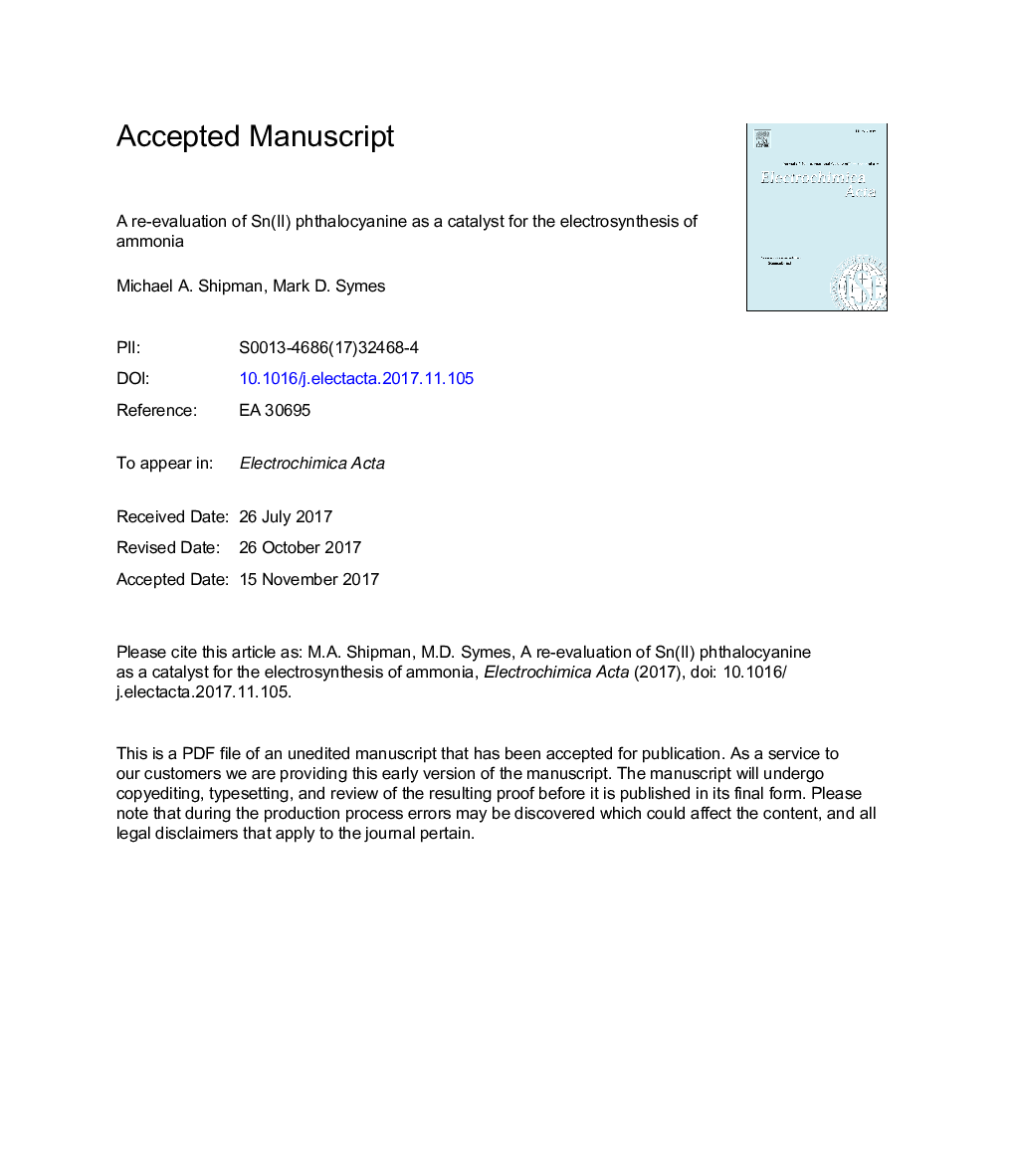| Article ID | Journal | Published Year | Pages | File Type |
|---|---|---|---|---|
| 6605190 | Electrochimica Acta | 2017 | 19 Pages |
Abstract
The electrosynthesis of ammonia from nitrogen and water is a topic of considerable interest in the quest for sustainable and decentralized NH3 production. Tin(II) phthalocyanine complexes have been proposed as electrocatalysts for nitrogen reduction to ammonia in aqueous solution, with Faradaic yields approaching 2% having been reported. Herein, however, we show that such complexes are not electrocatalysts for this transformation, with the amount of ammonia detected being essentially the same under N2 and under Ar. Instead, we suggest that apparent ammonia generation could arise either through contaminants in the as-prepared tin(II) phthalocyanine complexes, or by the electro-decomposition of these complexes under cathodic bias.
Related Topics
Physical Sciences and Engineering
Chemical Engineering
Chemical Engineering (General)
Authors
Michael A. Shipman, Mark D. Symes,
